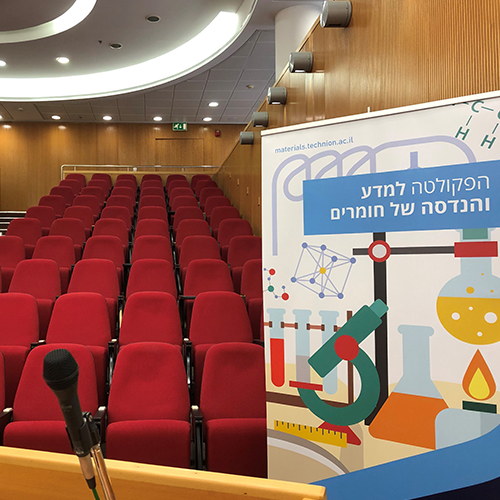
Ms. Adi Pariente,
10/01/2021
ZOOM
14:30
Pure polymeric materials alone cannot integrate all of the physical and mechanical properties required for modern applications in the field of controlled drug release (CDR), mainly due to their tendency to disassemble upon dilution in the biological environment. Hybrid materials developed via functional polymers with inorganic nanostructured compounds can overcome some of these limitations and achieve additional features due to the remarkable properties and multi-functionalities deriving from their nanocomposite structure and the stimuli-responsiveness of the ceramic component.
In this work, we initially investigated the nanostructure of various hybrid amphiphilic nanoparticles combining poly(ethylene oxide)-b-poly(propylene oxide) (PEO–PPO) block copolymers and titanium dioxide (TiO2) produced by using a sol-gel process developed in our laboratory that comprises the synthesis of a Ti(IV) oxo-organo complex in an organic solvent and its aging. This method enables the production of spherical nanoparticles exhibiting good physical stability in water and good size control. The produced nanoparticles are sono-responsive, producing reactive oxygen species (ROS) upon irradiation with ultrasound. After a characterization of the nanoparticles, we assessed their cell compatibility in pediatric tumors in vitro. Finally, we studied the course by which activated nanoparticles kill cancer cells in vitro.


